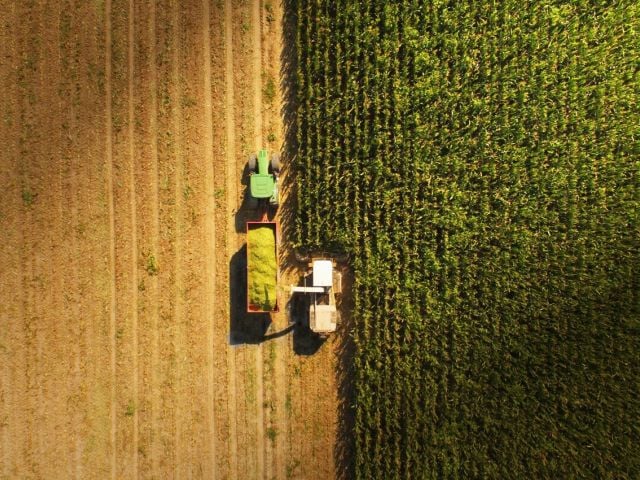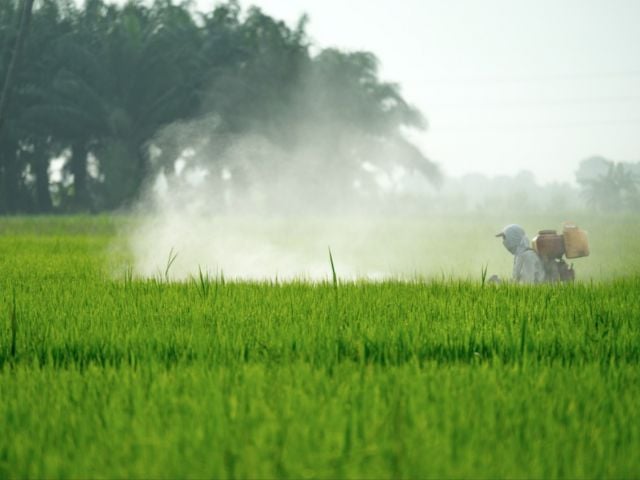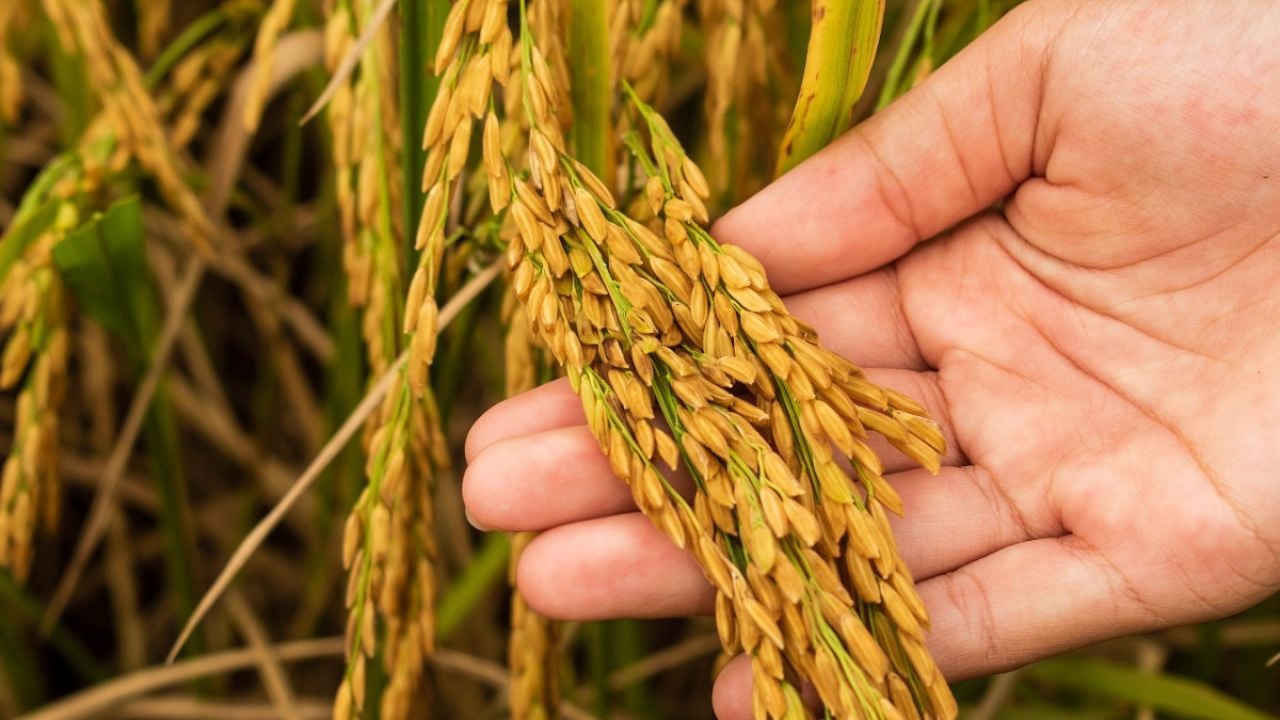
Some agriculture groups and Republicans in Congress are proposing to increase crop price guarantees in the upcoming farm bill to boost farm subsidy payments – but an EWG analysis shows some rice farmers are already reaping financial rewards.
Between 2017 and 2021, rice farmers received payments from three types of taxpayer-funded farm support programs, to the combined value of over $3 billion, the analysis finds. The farmers often get compensated many times for a single decrease in crop prices.
The lion’s share of the payments flowed to the largest subsidy recipients. And this money likely went to farmers in just a small number of counties.
Even so, industry organizations and their Republican allies in Congress want to increase crop price guarantees by taking away $19.5 billion designated for conservation programs in the Inflation Reduction Act, or IRA.
EWG has already found that co-opting the IRA money would mostly benefit just 6,000 farmers in Southern states, many of whom are rice farmers.
The latest EWG analysis finds that some rice farmers received payments from three types of taxpayer-funded programs:
- An indemnity from their taxpayer-subsidized crop insurance policy.
- A payment from one of two traditional commodity farm subsidy programs tied to crop prices or revenues.
- A payment from a program – the Coronavirus Food Assistance Program, or CFAP – designed to offset the effects of the Covid-19 pandemic on crop prices.
The $3 billion is likely an underestimate.
Rice farmers also collected payments between 2018 and 2020 through the Market Facilitation Program, or MFP, which paid farmers for farm income reductions caused by then-President Donald Trump’s trade war. But it’s unclear how much money was paid out to rice farmers, because the Department of Agriculture no longer discloses that information on their website.
The payments likely totaled hundreds of millions of dollars, since MFP payments alone to farmers of non-specialty crops, such as rice, in Arkansas topped $443 million. Arkansas is the country’s biggest producer of rice.
The figure below shows that between 2017 and 2019, most of the money to rice farmers came from traditional commodity programs called Agricultural Risk Coverage, or ARC, and Price Loss Coverage, or PLC. ARC and PLC payments for 2021 have not yet been fully accounted for in the data because of how the programs are structured, so payments will be even higher when the numbers are finalized.
In 2020 and 2021, crop insurance grew as a source of payments to rice farmers, and payments for CFAP were made to rice farmers in 2021. (See Figure 1.)
Figure 1. Much of the money paid to rice farmers between 2017 and 2021 came from commodity programs.
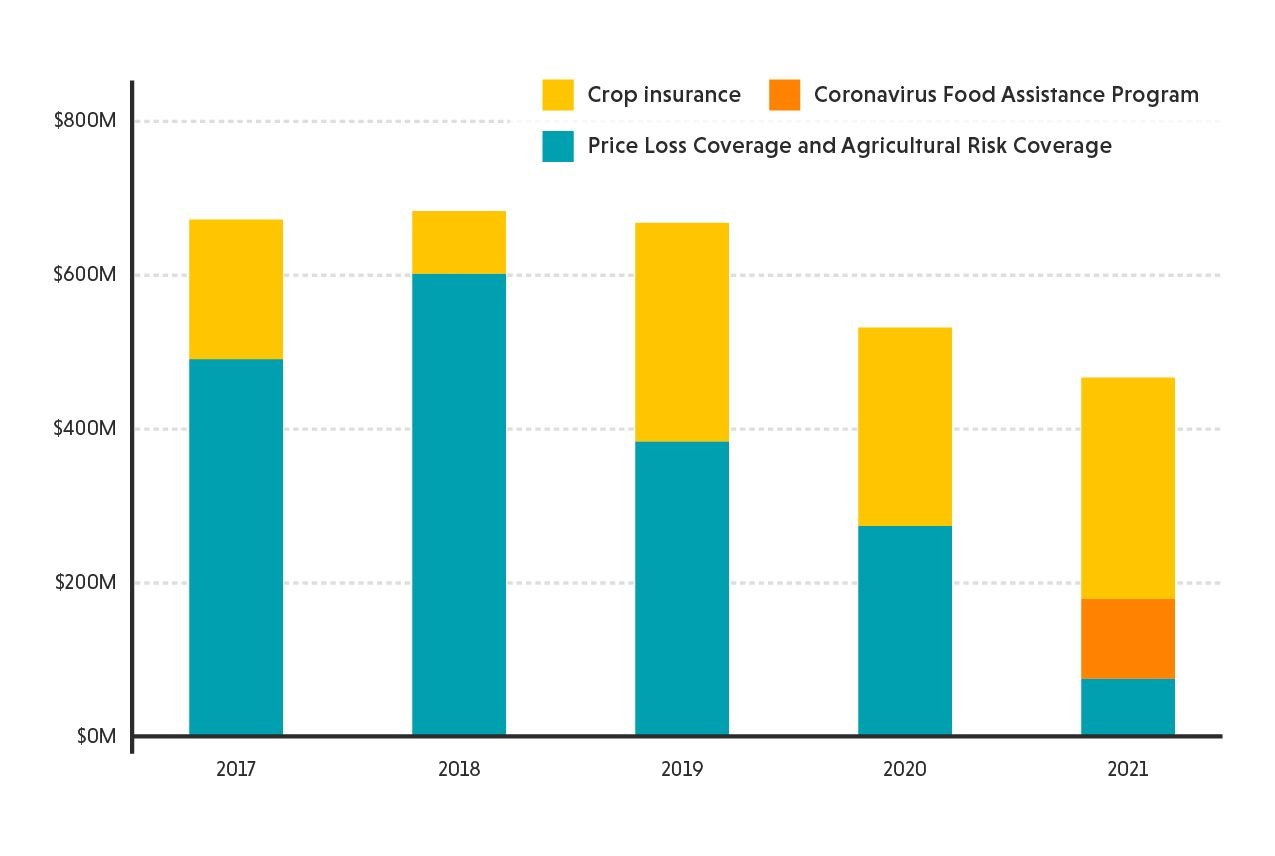
Source: EWG, from Farm Service Agency, ARC/PLC Program Data, the Department of Agriculture, Coronavirus Food Assistance Program 2 Data, and Risk Management Agency, Cause of Loss Historical Data Files.
Farmers and taxpayers pay into crop insurance premiums every year. Taxpayers shoulder 63 percent of the cost, on average, and indemnity payments are made from total premiums collected. Taxpayers foot all – 100 percent – of the cost of traditional commodity farm subsidy programs and CFAP.
These programs benefited rice farmers in a small number of counties only. The map below shows that rice farmers in just 105 counties across only eight states received a crop insurance payment in 2021. This is far fewer than the over 1,700 counties where farmers received a crop insurance payment for corn, or the almost 1,600 counties where farmers collected a payment for soybeans.
Figure 2: Nationally, returns to rice farmers per acre have gone up over time.
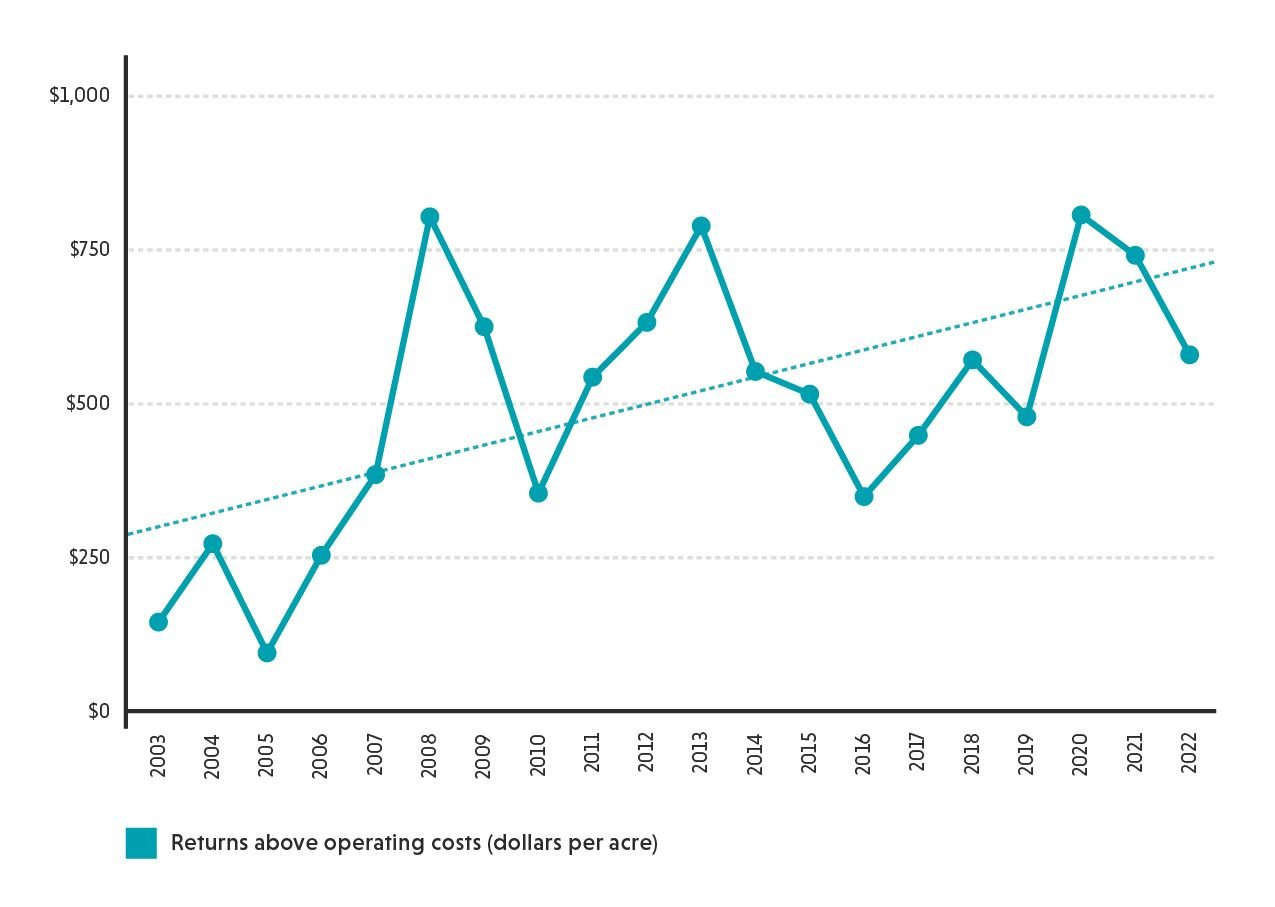
Source: EWG, from USDA Economic Research Service, Commodity Costs and Returns.
And rice farmers have seen record profits, according to the USDA. The profits earned by rice farmers – the difference between the value of rice sales and the operating costs of its production – have increased more than five times, from $141 per acre, in 2003, to $859 per acre in 2022, according to the USDA.
Figure 3. In Arkansas, returns to rice farmers per acre have also steadily increased over time.
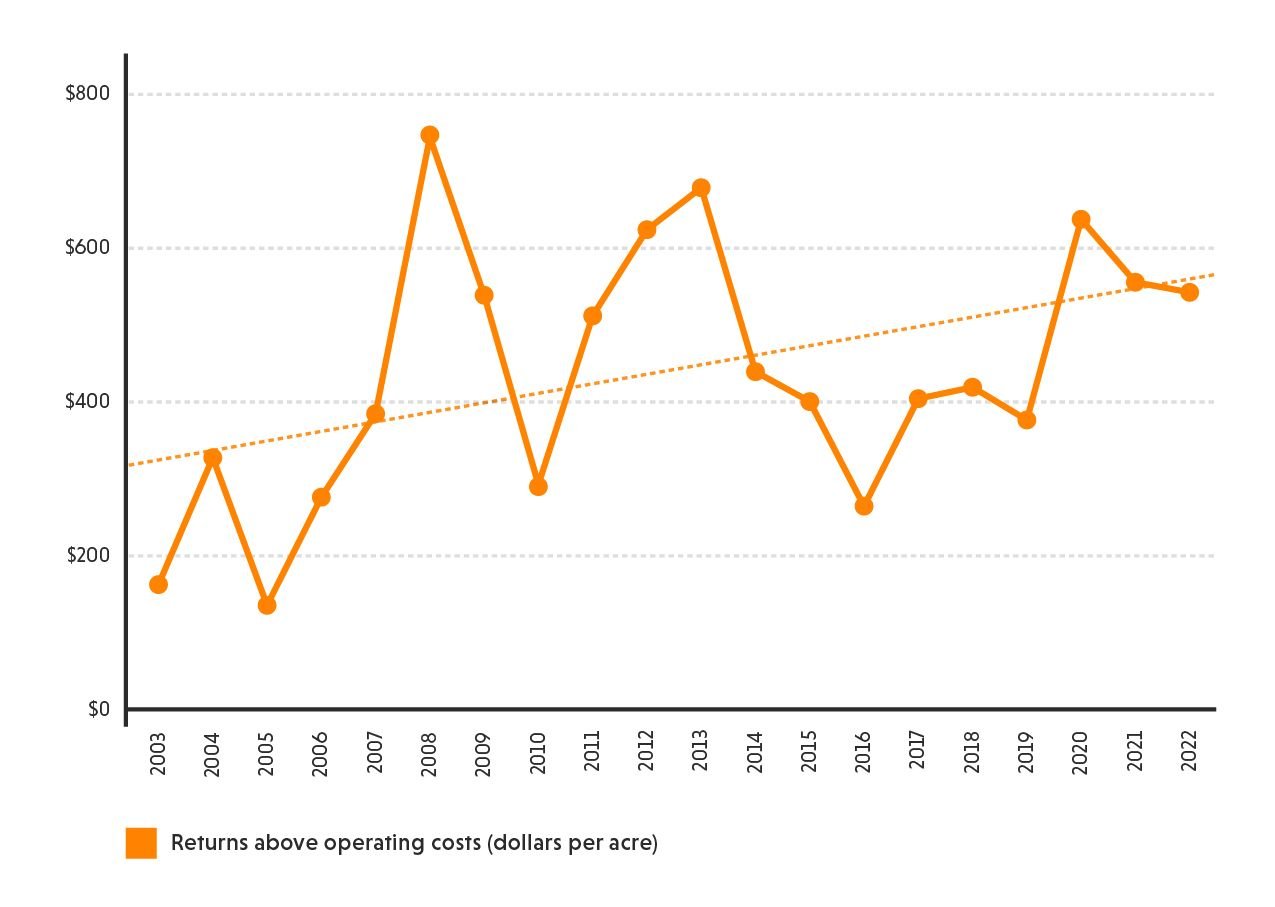
Source: EWG, from USDA Economic Research Service, Commodity Costs and Returns.
In Arkansas, the biggest rice-growing state, rice farmers have also enjoyed record profits. Returns above operating costs went up, from $158 per acre, in 2003, to $747 per acre, in 2022.
An increase in price guarantees would send more subsidies through the ARC and PLC commodity programs to relatively few farmers of rice, peanuts and cotton in mostly Southern states.
Instead this money should remain within the conservation programs, as Congress intended in the IRA, which would benefit significantly more farmers, the environment and the climate.
